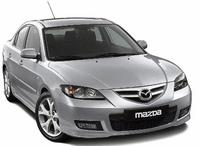Paul Messam, Gleaner Writer
Never take both hands off the wheel; for example, while letting the natural caster action of the front wheel 'spin' the car back on course.
AS YOU spend more time on the road, you will be even more aware that drivers pull out to pass in some of the most dangerous places at intersections, blind hills and curves. You may be driving around a blind curve just as someone is making such a deadly manoeuvre. It is best to keep your eyes focused on the centre of the road, and on the point at which you can see farthest around the bend.
When handled correctly, there is really nothing about cornering that should stimulate any fear or upset in a driver. However, mistakes can be made unless a clear concept exists of what energies are developed in such operation, and what can be done to control them. Some accidents are caused by drivers losing control on curves. Any curve can be negotiated if a little forethought and common sense are applied.
"Energy of motion and friction are two forces that act on a car when it rounds a curve or turns a corner," advises David 'Mike' Jones, an experienced St Andrew-based auto mechanic. "The energy a moving car builds up with its speed tries to keep the car going in a straight line. The higher the speed of a vehicle, the more it resists turning. In order to reduce the energy of motion, drivers should slow the vehicle down, if it is going too fast. There may not be enough traction to prevent the car from skidding straight off the curve," says Jones. He further explains that if the friction between the car's tyres and the pavement is greater than the energy of motion, the car can be steered around a corner or curve.
Proper speed
Adjusting to the proper speed ahead of time is probably the only control a driver has when driving into a curve. If the driver decides to drive at, say, 40 mph around a curve with a posted speed limit of 20 mph, that person may not realise the amount of friction needed to keep the car on the road. "The amount of friction needed at 40 mph will be four times greater than the amount required at 20 mph," Jones says.
Another factor to consider is the holding of the steering wheel. He explains that it is one thing to hold the wheel right, but another to turn it correctly. For a straight-line travel the 'ten to two' position provides the driver with the best way to make corrections to the left and right. However, more arm and hand movement is generally needed in a genuine corner.
When entering a corner, the hand position should be altered slightly. For example, if a left-hand bend is coming up, the driver should drop his left hand to the four o'clock position on the wheel, thus placing his hand at 180 degrees from each other. He is also in a position to decrease lock as the turn straightens out, or to correct should a patch of slippery surface begins to skid.
It must be remembered that techniques vary for negotiating slow corners where more than one revolution of the wheel is required. Mechanics and driver trainers warn against crossed hands. "Hands should not be crossed on the wheel, that is, when one hand moves from the bottom of the wheel to the top while the other continues turning," says Owen Toyloy of O&C Driving School.
Basic pointers
According to Toyloy, this might cause the hands and arms to become tangled should an emergency arise. However, there are some basic pointers to bear in mind as drivers deal with curves, corners, speed and sharpness.
1. Drivers should try to keep both hands on the wheel as much as possible during the turning sequence.
2. Always attempt to keep your hands on the opposite sides of the wheel for maximum control and leverage.
3. Never take both hands off the wheel; for example, while letting the natural caster action of the front wheel 'spin' the car back on course. Also, try to determine the sort of steering characteristics your motor vehicle has. If it tends towards either oversteer or understeer, keep in mind that these conditions will intensify at higher speeds.

